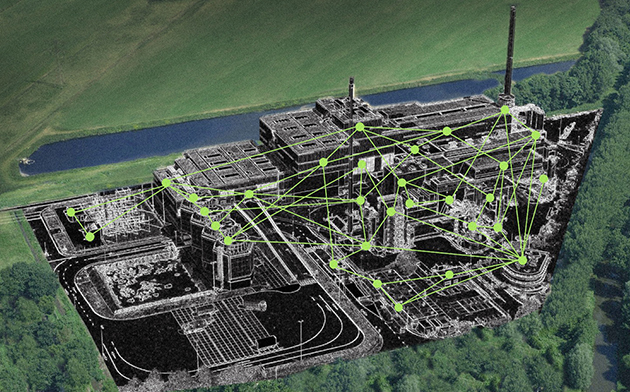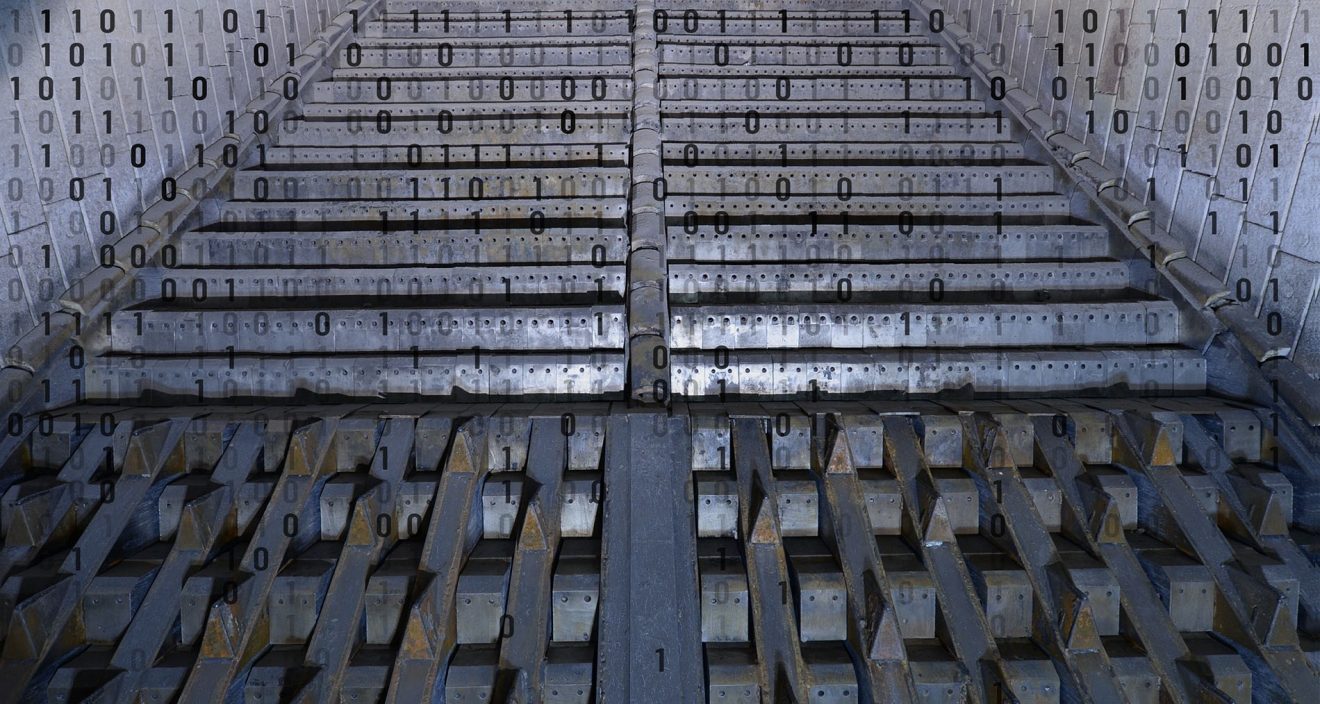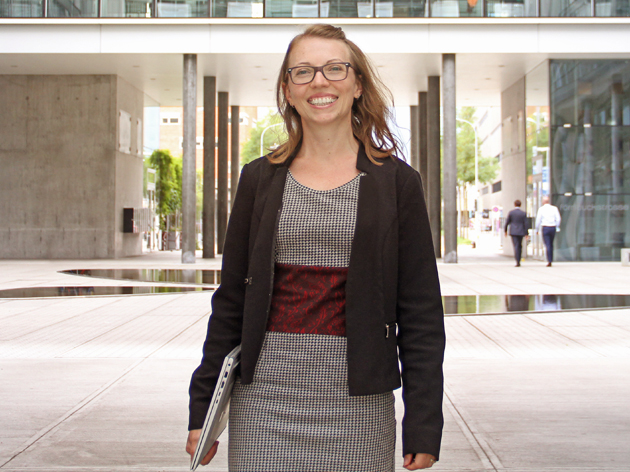
|
|
Let’s be honest: can an artificial intelligence (AI) work out in advance when a specific component will have to be replaced? Data, algorithms and digital assistants are all around us. Digitalisation is on everybody’s lips. But does that also affect our plant technology? How far can digitalisation help us to improve plants and refine technologies? What’s technically possible – and what makes economic sense? We invite you to take a short tour of digitalisation at Hitachi Zosen Inova. Enjoy!
|
The Hitachi Zosen Inova Deutschland team
|
|
|
|
|
|
|
|

|
|
Digitalisation in plant engineering – does it make sense or not? Selectively capturing and analysing data gives you a valuable tool to help in the operation of your plant.
|
|
Digitalisation with its sights on industrial plants
|
If you so choose, it’s possible to generate a huge amount of data with an WtE plant. Indeed, many plants do precisely this, with sensors installed at key spots to feed the control system with a constant stream of data and information on operating states. The guys in the control room always have up-to-the second information. Our newly constructed plants come with the Pamela Remote Monitoring system, providing a special extra service for at least the duration of the warranty period. The analytics tool captures data from across the entire plant and visualises this information for plant operators. The reports show things such as performance, the use of materials, and in and output. But what happens when operation is disrupted? Real-time data give only a snapshot of the problem. Pamela’s data recording functionality, by contrast, allows us to find the cause. This requires interdisciplinary collaboration: an operating data analyst in Zurich monitors the data sent back from the plant and compares possible irregularities with events observed on site. Combining these different views enables us to find the origin of the problem even if the disruption is complex. But data analytics is a balancing act between big data and functionality. In other words, not every operating state that could be saved is saved; there’s a selection to determine which figures from the plant are important and relevant. Unlike the control system, which records data on a second-by-second basis and usually keeps it for a year, we only save data on a minute-by-minute-basis – but keep it for the entire life cycle from the moment the plant goes into operation. The idea is to be able to look back into the past to identify a trend indicating when and where a problem arose. The data from the control system can also be brought in if necessary. This preselection enables the required data to be found quickly and efficiently. Connected to the Pamela system we currently have 32 Waste to Energy and Kompogas plants, which with up to 4200 signals have generated a data volume of only 5 terabytes since Pamela was first installed almost 20 years ago. This low data volume indicates the high quality of the data we gather and analyse on behalf of our customers.
|
|
The big question is whether it’s worth the investment. The answer is clear-cut: For plants that had Pamela Remote Monitoring built in the construction phase, the service is definitely worth it, delivering valuable data on trends throughout plant operation and enabling disruptions to be analysed. If Pamela was not built in in the first place or the plant documentation isn’t available digitally, the investment is usually too much to be worth it. It would mean first setting up and synchronising entire systems. For this reason, we always recommend integrating Pamela directly when a new plant or line is constructed.
|
|
|
|
|
|

|
AI, make my plant better! Three digital products that make operation easier
|
Wouldn’t it be great to have an artificial intelligence (AI) that improved the performance of a plant while at the same time reducing the operating costs? We have an AI module that actually does this. Part of our CCS+ combustion control system, it monitors the combustion process and supplies real-time data to an AI module that responds rapidly and automatically in extraordinary events. CCS+ helps operators to maximise the performance of their plant. The system can be retrofitted to any plant.
|
Another breathtakingly simple and efficient product that we’re currently working on with R&D is our Lick&Stick sensors. We use them to detect and resolve mechanical problems in plants, such as clogging ash hoppers. To do this we deploy temporary sensors to capture data from the relevant components, and network these sensors wirelessly for analysis. The fact that we know what sensors at what points are supplying the most important information enables us to find the causes of problems rapidly, even when there’s no connection to a comprehensive remote monitoring system. The product is currently at the testing phase, and we expect it to launch in 2023.
|
|
Or maybe all you need is a digital version of the shift log, something we also offer as an upgrade independent of Pamela. This enables you to easily record, in structured form, logbook data, instructions, routines and servicing information, stored locally or additionally backed up in Zurich as desired. We’ve found the digital shift log to be a great hit with the staff operating plants, primarily because it’s so easy and intuitive to use.
|
|
|
|
|
|
|
|

|
|
Stephanie Albrecht, Group Leader Operating Data Assessment at Hitachi Zosen Inova.
|
|
People at HZI: Stephanie Albrecht – a trailblazer in the data jungle
|
When Stephanie Albrecht joined the company back in 2013, digitalisation was only in its infancy at HZI. Sure, we had already been using the Pamela Remote Monitoring system for a decade, but no one really knew what to do with much of the plant data it was providing. Stephanie’s job was created in response to a need reported by the Warranty department in connection with more complex problems in the commissioning and operation of WtE plants. The rationale was that if we have both the process-relevant data and the plant engineering know-how, we should be able to spot irregularities in the data as well – in other words, it should be possible to use the data to find pointers to the cause of the problem. To hire the right person for the vacancy the challenge was to find someone combining the wide-ranging knowledge of a process engineer with comprehensive IT know-how. Finding Stephanie was a stroke of luck, both for her and for HZI. She gets to deploy her unusual combination of skills in this field, and HZI has been able to build up a completely new area of service over the last decade. Now Stephanie is Group Leader Operating Data Assessment, untiringly driving service-related projects connected with digitalisation at HZI and thus adding value for our customers. She works with a core team of three people together with other teams from R&D and the Project office. This means that at present, 12 people are working on the development of digitalisation products. The size of the team is an indication of the extent to which digitalisation has become a focus for HZI.
|
Stephanie’s just as excited to be working with plants and data as she was on her first day at work. She’s familiar with every single HZI database and knows every plant inside-out from the data perspective. She knows that in the millions of datasets in her possession she can help customers find solutions to problems, and that her data add value. She’s well aware that her work involves treading the line between learning from data and the utmost confidentiality. Stephanie attaches great importance to privacy and data security, both outside and inside HZI. For her it’s important that customers know at all times what’s happening with their data.
|
|
When it comes to Waste to Energy, Stephanie is very pragmatic. “The hot water in my home comes from the neighbouring WtE plant. When I look out of the kitchen window it always makes me proud that this technology is providing a reliable way to heat people’s homes. We dispose of waste and use it to produce energy, and we’ve used the engineering knowledge of the last centuries to build the best possible plants. That’s our way of helping the environment.” But she’d like to see HZI take yet another step in this direction: “Wouldn’t it be great if HZI could fit a ship with a small WtE plant. The ship could collect waste from the ocean and go from island to island picking up refuse, fuelled by Waste to Energy incineration. I really believe this could become a reality.”
|
|
|
|
|
|
|
Imprint: This newsletter is sent by Hitachi Zosen Inova Deutschland GmbH, Waltherstrasse 49-51, 51069 Cologne, Germany. Represented by the managing directors Mikko Immonen and Carsten Stölting. Local Court Cologne / HRB 83251. VAT ID No.: DE 299 340 714. Contact: +49 (0) 221 669576-10; info-germany@hz-inova.com. Responsible for editorial content: Carsten Stölting Unsubscribe: If you do not wish to receive this newsletter, you can unsubscribe at any time using the link below.
|
|
|

|
|
|
|